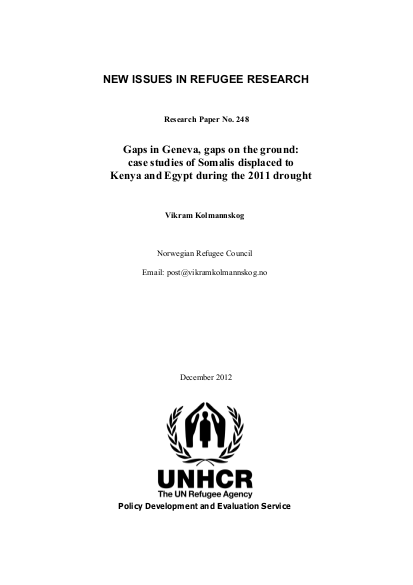
While most East African countries were badly affected by drought in 2011, the situation was almost beyond imagination in Somalia with famine being declared in several regions (FSNAU and FEWSNET 2011a). It was the most severe humanitarian crisis in the world in 2011 and Africa’s worst food security crisis since Somalia’s 1991 and 1992 famine. Throughout 2011, large numbers of destitute agro-pastoralists and others fled the country in search of assistance. This study explores the experiences of, and responses to, some of the Somalis displaced to Kenya and Egypt. Among relevant law we find international, regional and domestic refugee law and human rights law. For those displaced to another country in the context of natural hazard-related disasters, however, international law experts in Geneva and elsewhere have identified a normative protection gap (IASC, 2008). Those persecuted for certain listed grounds should be protected as refugees according to the 1951 Convention relating to the Status of Refugees and its 1967 Protocol. A wider group of people, including those fleeing generalised violence and events seriously disturbing public order, should be protected as refugees according to the 1969 African Union Convention governing the Specific Aspects of Refugee Problems in Africa. According to the experts, however, there is currently no international law providing a clear and secure base for protection for those displaced in the context of natural hazard-related disasters (IASC, 2008). This is becoming ever more acute as climate change is affecting the intensity and frequency of natural hazards (IPCC, 2012). Certain initiatives to address this normative gap exist, including the Nansen Initiative, which is a state-driven, multi-stakeholder process (Saboor, 2012). The Nansen Initiative arranges regional consultations, and the Horn of Africa is in the plan. While the initial focus was on sudden-onset disasters, there is an increasing understanding that slow-onset disasters such as drought cannot be ignored.